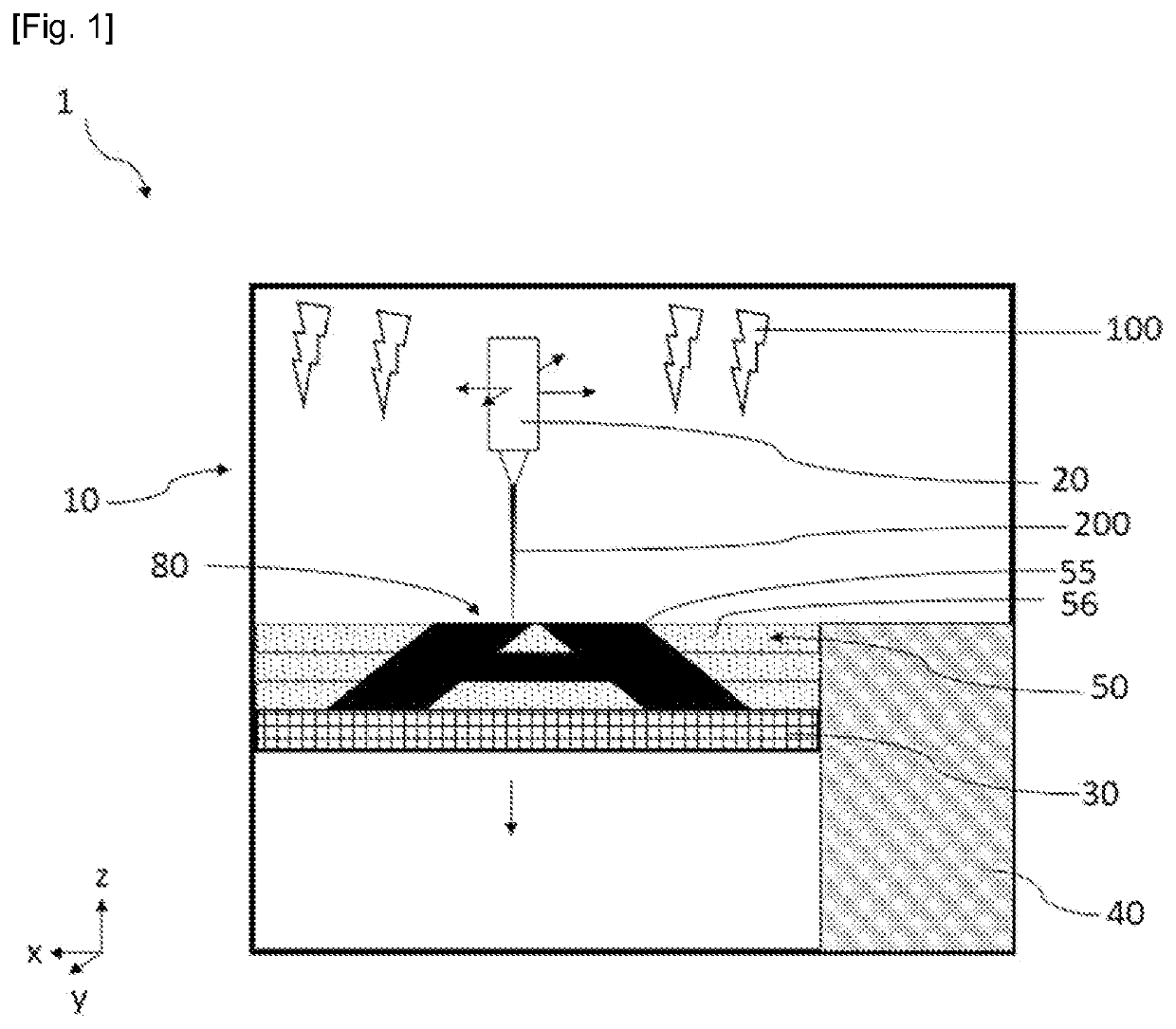Filled polyaryl ether ketone powder, manufacturing method therefor and use thereof
a polyaryl ether and ketone powder technology, applied in the field of polyaryl ether ketone powder, can solve the problems of anisotropic mechanical properties, inability to use a large proportion of carbon fibers in the powder, and three-dimensional objects
- Summary
- Abstract
- Description
- Claims
- Application Information
AI Technical Summary
Benefits of technology
Problems solved by technology
Method used
Image
Examples
example 3 (
According to the Invention)
[0132]The third composition used consists of the polyether ketone ketone according to example 1 and of Jetfine® 0.7C talc sold by the company Imerys, the talc representing 30% by weight of the composition (so as to ensure a volume proportion of filler equivalent to that of example 2).
[0133]Jetfine® 0.7C talc has a d′50, measured on a Sedigraph III Plus® machine, of 0.7 micron and a D′50, measured on a Malvern Mastersizer 2000® diffractometer, of 2.5 microns, i.e. a shape coefficient C equal to: 2.6.
[0134]The granules obtained with the composition according to example 3 were able to be milled to obtain a D50, measured using a Malvern Mastersizer 2000® diffractometer, of 120 microns.
example 4 (
According to the Invention)
[0135]The third composition used consists of the polyether ketone ketone according to example 1 and of Steaplus® HAR T77 talc sold by the company Imerys, the talc representing 30% by weight of the composition (so as to ensure a volume proportion of filler equivalent to that of example 2).
[0136]Steaplus® HAR T77 talc has a d′50, measured on a Sedigraph III Plus® machine, of 2.2 microns and a D′50, measured on a Malvern Mastersizer 2000® diffractometer, of 10.5 microns, i.e. a shape coefficient C equal to: 3.8.
[0137]The granules obtained with the composition according to example 4 were able to be milled to obtain a D50, measured using a Malvern Mastersizer 2000® diffractometer, of 110 microns.
[0138]The results for the milling of the powders according to examples 3 and 4 (according to the invention) relative to the results for the milling of the powders according to examples 1 and 2 (comparative examples) show that the milling of PEKK granules incorporating a...
example 7 (
According to the Invention)
[0141]Specimens of 1BA type, according to the standard ISO 527-2: 2012, were manufactured by injection of the powder according to example 3, with a feed temperature of 320° C., a screw outlet temperature of 340° C., a mold temperature of 80° C. and a cycle time of not more than 1 minute.
[0142]A tensile elastic modulus of 9 GPa was measured, at 23° C., with a travelling speed of 1 mm / minute, according to the standard ISO 527-2: 2012, using an MTS 810® machine sold by the company MTS Systems Corporation, equipped with a mechanical extensometer.
[0143]It is considered that the elastic modulus value obtained for a specimen manufactured by injection molding is equal to, or even less than, the value that would be determined for a specimen manufactured by laser sintering. Thus, if the specimen had been manufactured by laser sintering, it would necessarily have a tensile elastic modulus of at least 9 GPa.
PUM
| Property | Measurement | Unit |
|---|---|---|
| median diameter D50 | aaaaa | aaaaa |
| median diameter | aaaaa | aaaaa |
| median diameter | aaaaa | aaaaa |
Abstract
Description
Claims
Application Information
 Login to View More
Login to View More - R&D
- Intellectual Property
- Life Sciences
- Materials
- Tech Scout
- Unparalleled Data Quality
- Higher Quality Content
- 60% Fewer Hallucinations
Browse by: Latest US Patents, China's latest patents, Technical Efficacy Thesaurus, Application Domain, Technology Topic, Popular Technical Reports.
© 2025 PatSnap. All rights reserved.Legal|Privacy policy|Modern Slavery Act Transparency Statement|Sitemap|About US| Contact US: help@patsnap.com



